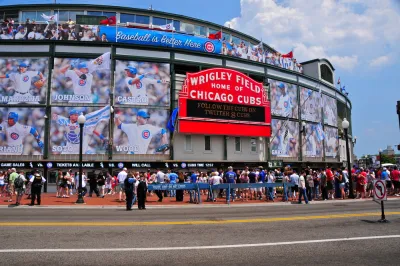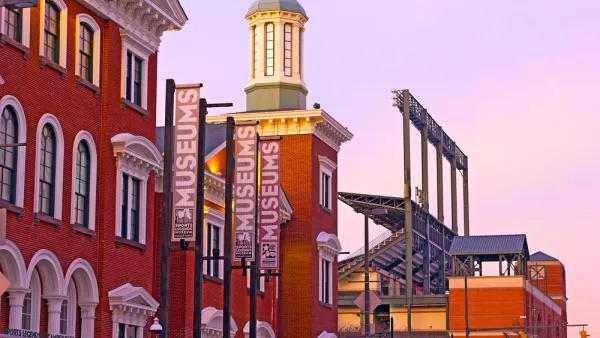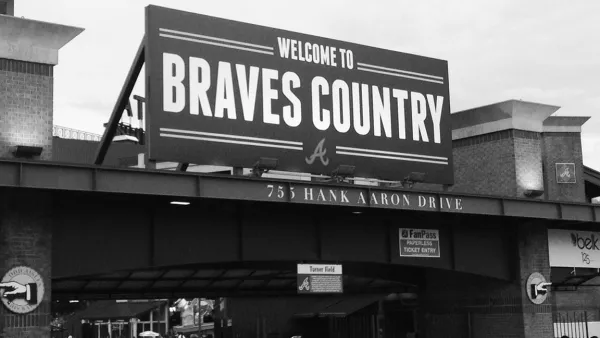A new book looks at the evolution of American ballparks and the changes that have mirrored urbanism.

Ballpark: Baseball in the American City is a new book from Paul Goldberger that traces the history of ballparks in the United States. "From the utilitarian beauty of early 20th-century ballparks like Chicago’s Wrigley Field and Boston’s Fenway Park—each nestled into its respective neighborhood—to the doughnut-shaped, concrete structures that sprouted in suburbia after World War II, baseball’s growth has neatly paralleled the rise, fall, and rise again of U.S. cities," says Patrick Sisson.
The first ballparks sprung up in cities, and they were very enmeshed in the urban landscape. In postwar America, they moved to the suburbs, writes Sisson. "This was the time of the 'concrete doughnuts,' which Goldberger argues were bland, multipurpose, municipal parks often set far from the city center, ones like Oakland Coliseum, Fulton County Stadium in Atlanta, and Philadelphia’s Veterans Stadium."
Ballparks then returned to the city, along with urban renewal. The most recent era, according to Goldberger, is one where ballparks are part of commercial and entertainment megadevelopments. "With Atlanta’s new park, as well as recent developments around the St. Louis ballpark and Chicago’s Wrigley Field—where the surrounding Wrigleyville neighborhood is gradually being turned into a more generic, mall-like destination—Goldberger is disappointed to see team owners trying to control the city inside and outside of the gate," notes Sisson.
FULL STORY: Looking at the changing American city through its ballparks

National Parks Layoffs Will Cause Communities to Lose Billions
Thousands of essential park workers were laid off this week, just before the busy spring break season.

Retro-silient?: America’s First “Eco-burb,” The Woodlands Turns 50
A master-planned community north of Houston offers lessons on green infrastructure and resilient design, but falls short of its founder’s lofty affordability and walkability goals.

Delivering for America Plan Will Downgrade Mail Service in at Least 49.5 Percent of Zip Codes
Republican and Democrat lawmakers criticize the plan for its disproportionate negative impact on rural communities.

Test News Post 1
This is a summary

Test News Headline 46
Test for the image on the front page.

Balancing Bombs and Butterflies: How the National Guard Protects a Rare Species
The National Guard at Fort Indiantown Gap uses GIS technology and land management strategies to balance military training with conservation efforts, ensuring the survival of the rare eastern regal fritillary butterfly.
Urban Design for Planners 1: Software Tools
This six-course series explores essential urban design concepts using open source software and equips planners with the tools they need to participate fully in the urban design process.
Planning for Universal Design
Learn the tools for implementing Universal Design in planning regulations.
EMC Planning Group, Inc.
Planetizen
Planetizen
Mpact (formerly Rail~Volution)
Great Falls Development Authority, Inc.
HUDs Office of Policy Development and Research
NYU Wagner Graduate School of Public Service





























